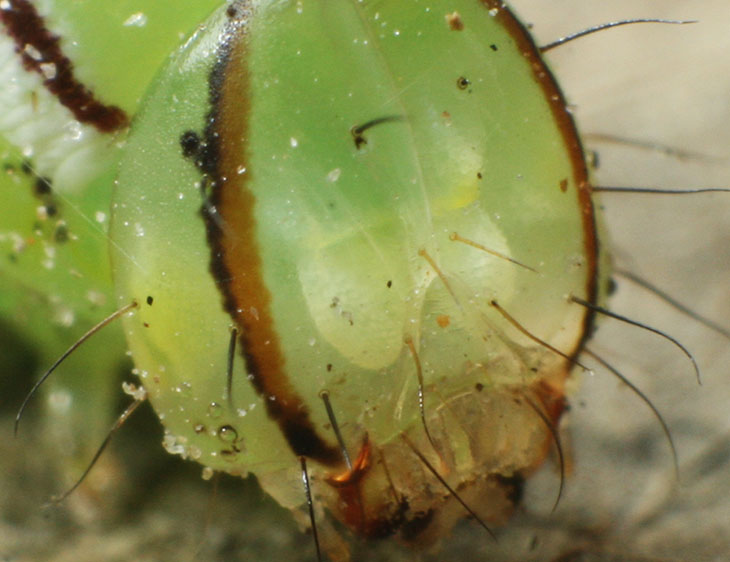…or just 18, or 12 perhaps (geek alert.)

Still working on 2014 right now, and we have this startling capture when photographing a variable oakleaf caterpillar (Lochmaeus manteo.) The light angle and the translucent exoskeleton/skin of the caterpillar combined to bring up this peek at internal anatomy, which looks like brain lobes, though I’m skeptical that they would be that big or detailed in an arthropod. Then again, the head is pretty sizable for some reason. But I’ve said it before: I just photographs ’em – someone else can explains ’em.
[Which still won’t stop me from applying my own bastardization of ‘reasoning.’ Because the adult moth that will spring from this will have a much smaller head, especially when you eliminate the compound eyes, and you might think it’d be the other way around – bigger brains as adults, especially ones that fly and fornicate. Yet for many arthropod species, that’s all they do as adults, which is the reproductive stage – many don’t even eat during their final instar. And we all know that reproduction doesn’t require a lot of brains, and may even shut them down at crucial times, which is not going to make a good children’s morality fable no matter how you slice it. Meanwhile, caterpillars… walk and eat. So do they need larger brains and/or olfactory apparatus for proper food selection, detecting the very specific foods that they often have (note the name)? Or perhaps this is their philosophical stage, where they ponder all those worldly curiosities and determine the meaning of life, before they lose it all during metamorphosis because the universe has a nasty sense of humor? What does that potentially say about this post?]



















































